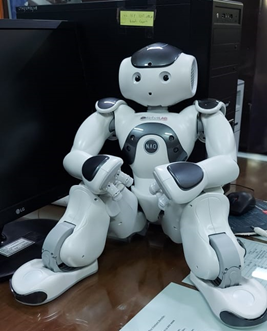Child-Robot Interaction
Cognitive Robotics based study of Child-Robot Interaction (CRI) - Characterization of Critical Parameters and Interaction Design
The principles of Child-Robot Interaction is yet underdeveloped and a lot of work is in progress to develop the foundation. Though rapid progress in the field of artificial intelligence is paving a path towards the goal, that machines becoming adaptively intelligent, the complexity associated for designing such a framework is increasingly challenging. Humans subconsciously adapts their behaviour to the surrounding environment to make the interaction run smoothly. Replicating such smooth interaction is difficult for a machine (Robot). The challenge lies in the parameter identification for interactions and subsequently designing an efficient model to handle the same. For an adult these models are even more complex than a child owing to the order of heterogeneity associated with these interactions. This project aims to study several critical parameters that affect interaction with Robots for children with different age groups and develop suitable models that helps in implementing smooth and untethered interaction. Several physical design related issues of a Robot along with the capabilities that enhances interaction will be studied in an experiment based setup. Pre-defined interaction through a Robot (NAO) will be programmed and subjects (children with several age groups) will be engaged with the same. The response from the subjects will be recorded and analysed with the state-of-art data analytics tools to draw inferences. The inferences will help in modelling a more socially adaptive robot and also identify active and passive characteristics that should be inculcated in the Robot’s hardware and software designs.
